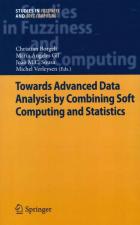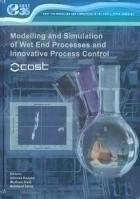
Advances in Crop Transformation and the Analysis of Transgenic Populations

Empfehlungen für die fahrgastfreundliche und behindertengerechte gestaltung von umsteigehaltestellen an den verknüpfungspunkten des städtischen und regionalen personenverkehrs für die neuen bundesland

The Evolution of Rules for a Single European Market - Part 1 Industry and Finance

COST Evaluation - Draft Synthesis Report

Beyond Mendel's Garden: Biotechnology in the Service of World Agriculture

COST Telecommunications - Technical Overview (2 copies)

Studies in Fuzziness and Soft Computing: Towards Advanced Data Analysis by Combining Soft Computing and Statistics
- Pages: 378
- Author(s): C. borgelt, M.A. Gil, J. M.C. Sousa, M. Verleysen (Eds)
- Publisher(s): Springer
- http://www.springer.com/engineering/computational+intelligence+and+complexity/book/978-3-642-30277-0
- ISBN/ISSN: 978-3-642-30278-7
- EUR: 139.05
– The book aims to describe how soft computing and statical methods can be used together to improve data analysis
– Advances research in soft computing and statical methods for data analysis
– Written by leading experts in the field
Soft computing, as an engineering science, and statistics, as a classical branch of mathematics, emphasise different aspects of data analysis.
Soft computing focuses on obtaining working solutions quickly, accepting approximations and unconventional approaches. Its strength lies in its flexibility to create models that suit the needs arising in applications. In addition, it emphasises the need for intuitive and interpretable models, which are tolerant to imprecision and uncertainty.
Statistics is more rigorous and focuses on establishing objective conclusions based on experimental data by analysing the possible situations and their (relative) likelihood. It emphasises the need for mathematical methods and tools to assess solutions and guarantee performance.
Combining the two fields enhances the robustness and generalisability of data analysis methods, while preserving the flexibility to solve real-world problems efficiently and intuitively.

Modelling and Simulation of Wet End Processes and Innovative Process Control
- Pages: 190
- Author(s): J. Kappen, W. Dietz, R. Grenz
- Publisher(s): Books on Demand GmbH, Norderstedt
- http://www.bod.de/index.php?id=296&objk_id=137036
- ISBN/ISSN: 978-3-8334-7619-8
The workshop VUUM brings together a group of experienced HCI researchers and practitioners to explore a long-standing research problem – the meaningfulness of measurable constructs and the measurability of non-measurable ones.

Electronic Emotion: the Mediation of Emotion via Information and Communication Technologies
- Pages: 233
- Author(s): J. Vincent & L. Fortunati
- Publisher(s): Peter Lang
- http://www.peterlang.com/Index.cfm?vID=11866&vLang=D
- ISBN/ISSN: 978-3-03911-866-3
Electronic emotion is the emotion lived, re-lived or discovered through machines. It is the meotion that users of information and communication technologies (ICTs) feel when using or not using different devices. Through ICTs emotion is amplified, shaped, stereotyped and re-invented but at the same time sacrificed. This book addresses a number of questions such as: what does elecontronic emotion actually mean? How does emotion change when mediated by information and communication technologies? Ow are the production and the consumption of electronic and mediated emotion articulated? What emotional investment do people express in ICTs? The editors have brought together a distinctive group of scholars from multiple disciplines including social sciences, linguistics and information sciences to discuss and provide some answers to these questions.
